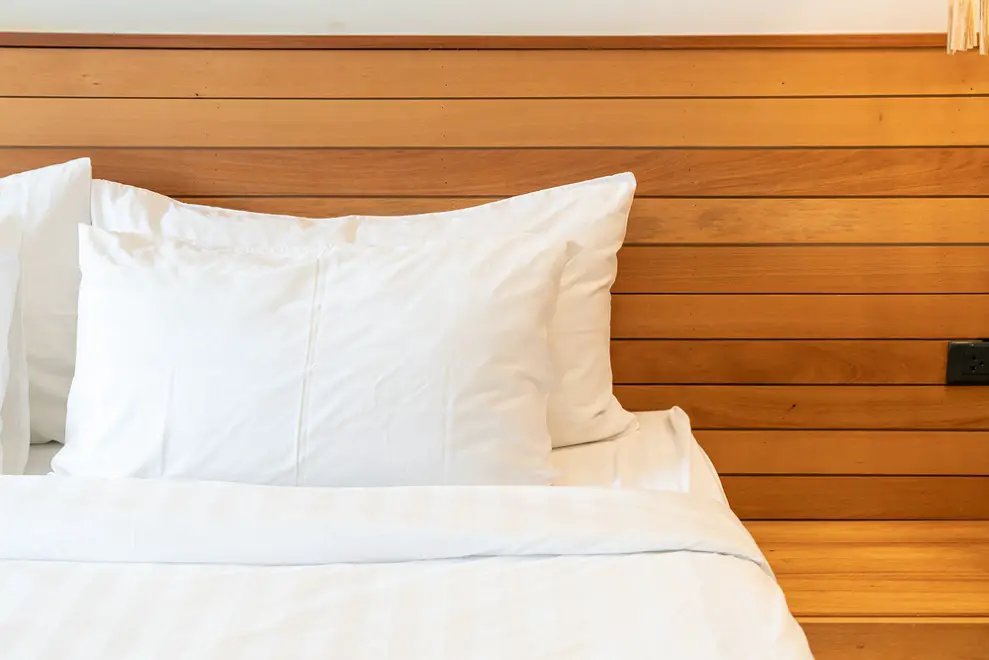Are you trying to decide what kind of pillow to buy?
Are you concerned about a possible allergic reaction or how firm or soft a pillow fill might be?
You’ve come to the right place.
A pillow’s fill material affects almost everything about a pillow – its softness or firmness, head and neck support, flexibility, allergen properties, durability, cost, and more.
That’s why we put together this definitive guide to pillow fill materials: to help you select the correct pillow type for your needs.
In this guide, you’ll learn everything you need to know about the most popular pillow fills materials to make an educated choice for your home.
How to Select a Right Pillow?
To find your perfect pillow, you need to consider many factors. Are you a side sleeper or a back sleeper? What is the height of the person with whom you share a bed?
And what size and type of pillow do they like best: fluffy down pillows; flatter synthetic ones that allow for air circulation while still providing all-over support; memory foam pillows that feel more luxurious but are heavier and hotter than other types—you have lots of choices! To help narrow it down, here’s some advice from experts.
Things To Consider When Purchasing a Pillow
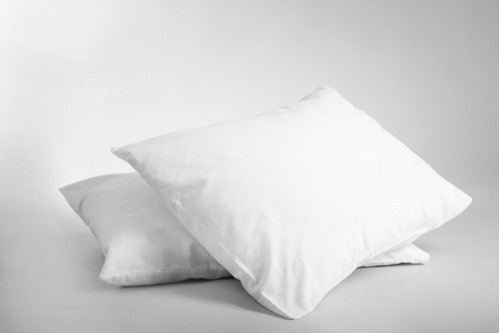
It is essential to consider many factors when shopping for a new pillow.
For example, your sleep position heavily influences which pillows fit you best and what will keep you cool all night long.
Use your budget to narrow choices first because prices vary widely based on fill material, size, and unique features such as cooling gel or medical applications.
In this section, we’ll cover the factors to consider when buying a pillow.
You will learn that it is essential to note the loft and firmness level and ensure it fits your sleeping position and comfort requirements.
Next, you need to stay away from certain fills like poly fiberfill if you have allergies or sensitive skin.
Finally, if there are cooling properties built into the design of a pillow, be aware of how well they work – the truth is that many coatings and treatments do not last long due to wear and tear from washing/drying.
Your Sleeping Position
A person’s preferred sleeping position affects what kind of loft (height) and density (soft/firm feel) works best.
Sleeping position can significantly impact the type of pillow that will work best for you.
Stomach sleepers tend to prefer softer, flatter pillows because thicker ones often prop their head up too high, which can cause breathing issues and neck pain.
Side sleepers generally like the support offered by a thick or medium-loft pillow to keep their head propped up while keeping their spine aligned.
Back sleepers are more flexible – most kinds of pillows will work as long as it keeps them comfortable.
People who change sleeping positions at night often prefer a mix of pillows with different loft and firmness levels to ensure that they’re comfortable all night.
Many brands offer pillows designed explicitly for the stomach, side, and back sleepers, so don’t worry about not finding a good pillow for your sleep position.
Loft
Loft refers to the pillow’s height or thickness when it sits flat with nothing on top.
Loft combined with firmness determines how high your pillow will be when you put weight on it.
Firmness
A pillow’s firmness, combined with its loft, can significantly impact the quality of sleep.
With the different mattress firmness levels available, it’s no surprise that there are pillows you can buy based on firmness level.
If your pillow is too soft or sinks too much, then your head may not be supported enough for a good night’s sleep.
If it is too firm – especially if you sleep on your side – then your neck may be out of alignment, and you can wake with pain.
Price
Pillows sell for less than $10 to $1,000+, but high-quality pillows often cost less than $200.
The price you pay mostly depends on the size, pillow fill, and cover material used in their design.
Egyptian cotton or silk goose-down pillows will cost far more than polyfill pillows inside a cotton-poly blend cover, for example.
Pressure Relief
Pressure points can cause discomfort and neck pain at night, especially if you sleep on your side.
But finding comfort is easy with the right pillow.
Choosing the right fill material, firmness and loft are the keys to getting this right.
To find relief from pressure while sleeping on your back or stomach, choose a soft down pillow that offers lots of airflow for coolness during warmer months and not feels heavy when it’s cold outside.
Side sleepers need more space between their head and shoulder than if they were lying flat, so a higher-loft, firmer pillow is better.
Pillow Material
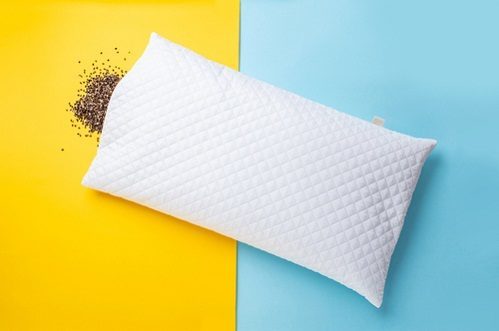
What pillow material the best? It turns out there’s no one answer.
All pillow fill materials have their pros and cons.
For example, contrary to what you might think, foam and polyfills are often non-allergenic, but many organic pillow fills are not.
Pillow Cooling Properties
Like mattresses, some pillows sleep cooler than others.
Down alternatives tend to sleep cooler than down or buckwheat hulls and are known for sleeping exceptionally cool because of the pillow material.
Memory foam is not the coolest material because it is more likely to trap heat. So some pillow makers add a cooling gel that counteracts this tendency.
What Are The Different Pillow Materials?
Foam is the most common pillow fill material.
There are many foam alternatives, as well – including natural foams such as soy-based options.
The most common pillow fill materials include:
- Buckwheat Hull
- Hemp
- Organic
- Cotton
- Recycled Cotton
- Recycled
- Polyester Recycled
- Wool
- Tencel
If you care deeply about the environment, then be aware that many pillow fill materials are non-renewable or not environmentally friendly due to the way the material is sourced and manufactured. This includes the following:
- Acrylic
- Bamboo
- Conventional
- Cotton
- Feather
- Pillows or Down
- Foam or memory foam
- Rayon/Viscose
- Silk
What Pillow Sizes Are Available
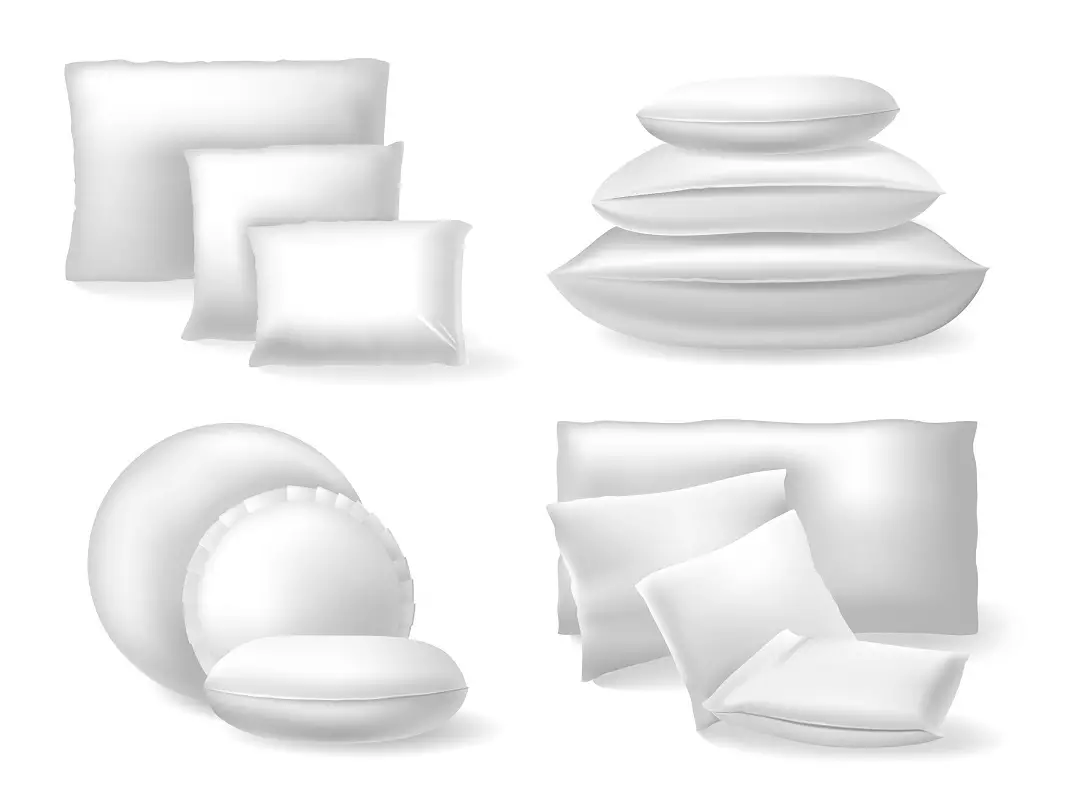
Pillows come in a wide variety of sizes and shapes to fit beds and people.
No matter your sleeping habits or body weight, there is a pillow that will suit you.
Standard
Standard size pillows measure 20 inches wide by 26 inches long and are typically the smallest, least expensive pillows sold.
Super Standard
Super Standard pillows are better for larger beds and people who need more length.
They measure 20 inches x 28 inches, providing sleepers with an extra 2-inches of space if needed due to different body types or instincts to move around in bed during the night.
A Super Standard pillow is an excellent choice for large bedrooms where two standard-sized pillows might not be enough.
Queen
Queen-size pillows are an excellent option if you sleep in a variety of positions throughout the night.
Queen-size pillows are 2 inches wider and longer than Super Standard, providing more room when sleeping on your back or side.
King
King size pillows are designed for king-sized beds and deep sleepers.
A King pillow is a luxurious addition to any bedroom, with ten more inches of length than Standard pillows.
Body Pillows
Body pillows are the perfect choice for people who love to hug a pillow.
A body pillow is typically 48 or 54 inches wide by 20 inches long.
Side sleepers and pregnant women often enjoy body pillows because they also support your arms and legs, thus reducing pressure point issues.
What Are The Different Types Of Pillows?
Memory Foam Pillows
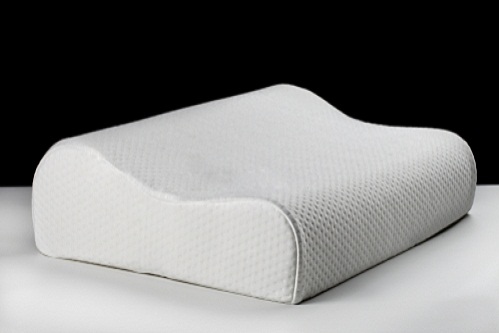
Memory foam pillows are popular because they are inexpensive, extremely comfortable, and conform around your head for a great night’s sleep.
A memory foam pillow is an excellent product for anyone suffering from achy joints and sore muscles because it will mold itself to your shape.
It’s also a good choice for light sleepers bothered by noise – memory foam is a silent fill material.
Just don’t forget that without warmth or pressure from your body, a memory foam pillow will revert to its original shape. So you’ll have to reform it every night.
Pros:
- Great for people with back and neck pain
- Durable, quiet, and soft.
Cons:
- some memory foam materials emit an unpleasant odor.
- Can get warm.
- Can be expensive, especially if designed for a specific purpose.
Shredded Memory Foam Pillows
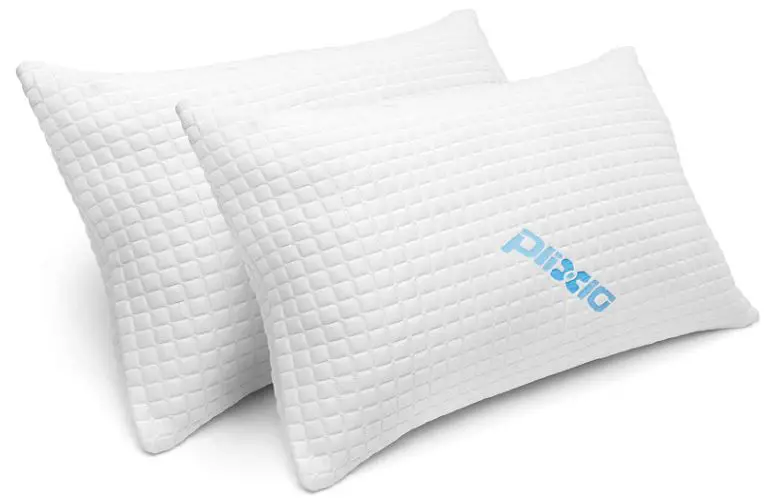
Shredded memory foam is the perfect pillow for those who wake up with a sore neck. It is also great for side and back sleepers because it provides support and comfort to your neck while you rest.
If you’re looking for a pillow that’s soft but not too stiff, shredded memory foam is a great option.
Unlike a single cohesive piece of memory foam, shredded foam pillows are made with tiny particles or shreds of foam, making them more pliable and softer. Shredded foam pillows also hold their shape, unlike regular memory foam pillows.
The ventilation in a shredded memory foam pillow is much better than in a single-piece foam pillow to remove heat from the memory foam material.
Pros
- can be hot and uncomfortable
Cons
- much softer than a traditional pillow, but not as supportive.
Down Pillows
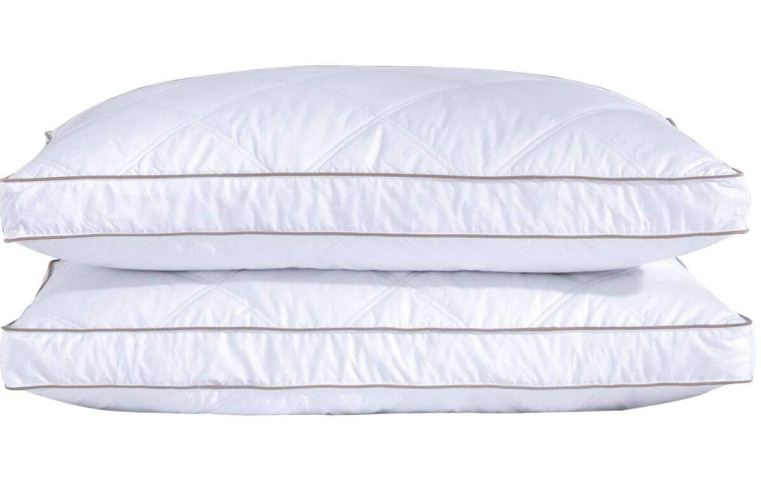
Down pillows are a great way to give yourself a little more support while sleeping. They work well on the side of your bed, at the foot of your bed, or as a pillow in your chair.
There are many kinds of down pillows available, and they vary significantly in price, comfort, and how much support they offer.
Contrary to belief, feathers and down are not the same. Down is a fluffy insulator that lies underneath the feathers of ducks or geese.
Goose down usually has more fluffiness than feathers, and feathers provide more support than down.
Pros
- extremely lightweight, a good choice for travel
- maintain shape well
- available in a variety of firmness levels
Cons
- wear more quickly than foam pillows.
- require dry cleaning
- moisture will break down the pillow
Feather Pillows

For people who can’t afford expensive down pillows, feather pillows offer a great alternative.
Feathers are significantly less expensive than goose and duck down – but you get most of the same benefits.
Pros
- Feather pillows are light and malleable.
- Durable and affordable
Cons
- While they may provide initial support, throughout the night, you might start sinking. This can be bad for your neck and spine.
- Feather quills can sometimes poke through the fabric, which is uncomfortable. Make sure your pillow cover is a tight weave to avoid this.
Polyester Fiberfill Pillows
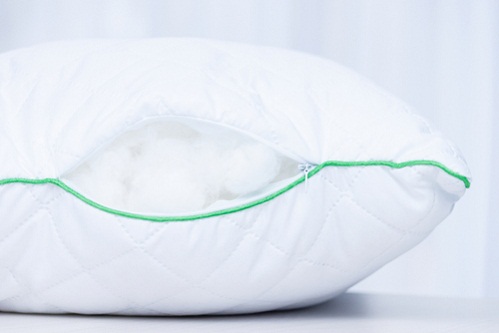
Polyester or polyurethane foam fiberfill is another popular choice for pillow fill because it is low-cost and readily available.
However, all polyesters naturally break down over time, which results in a shorter lifespan than other fills.
Pros
- Polyester pillows are available in many different firmness levels, meaning there’s something for everyone.
- Easy to clean, as they can be machine washed and dried.
- Lightweight, soft and odor-free
Cons
- Polyester fiberfill is not very breathable. The air doesn’t circulate well through the synthetic material to be uncomfortable in summer or on hot days.
- Polyester fibers are not resistant to dust mites, making them problematic for people with allergies. Additionally, the production of these fibers involves harsh chemicals and toxins, which can irritate your skin when you sleep on a pillowcase made from this fill material.
Buckwheat Pillows
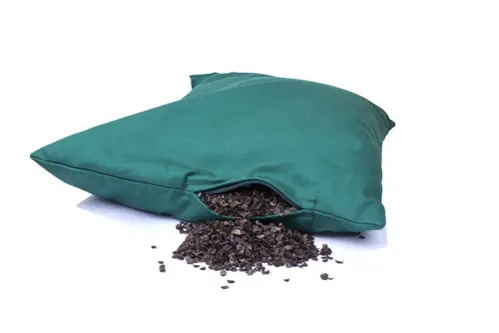
The buckwheat pillow is an excellent alternative to foam pillows. These pillows are filled with natural buckwheat hulls that are tough enough to make for comfortable sleep.
For centuries, buckwheat kernels have been used in Eastern Asia as filling for mattresses and pillows, and today you can find them on many Western beds.
Pros
- Buckwheat pillows provide excellent head and neck pain relief
- Breathable, so they keep you cool on hot summer nights.
- Buckwheat pillow materials are eco-friendly
Cons
- Not the best for light sleepers, as they tend to make a rustling noise while moving
Microbead Pillows
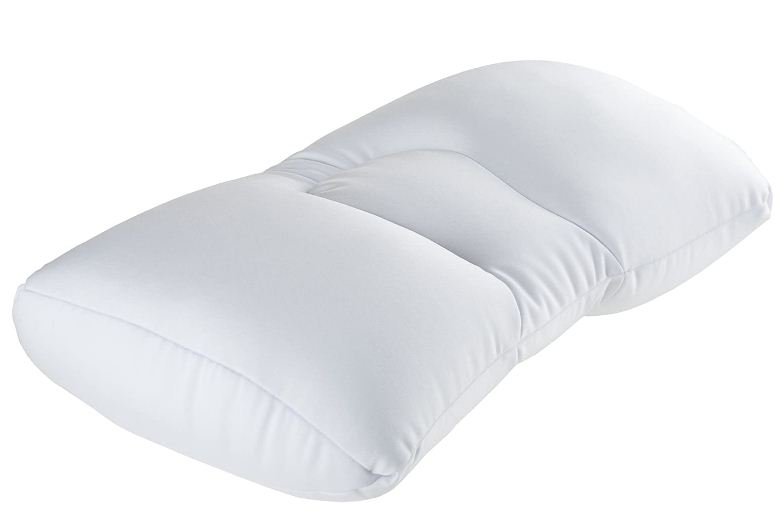
Sometimes, the simplest things are best, but now when there are microbead pillows, it’s hard to say that.
These tiny polystyrene beads make for excellent cushioning and contouring on an otherwise flat surface – just like bean bags do.
Microbeads used in pillows are usually made of a soft material such as spandex or lycra, so they don’t flatten too much over time from people lying on them.
Pros
- Soft and lightweight, a good choice for travel
Cons
- Not a good choice for the environment
- Somewhat noisy
Latex Pillows

The latex pillows you see in your local stores are made of a mixture of polyurethane and latex.
Polyurethane is a thick, hard plastic used to make the pillow comfortable. The latex foam is a soft, flexible material that makes the pillow soft and allows it to be sturdy enough to support the weight of someone lying on it.
Pros
- Excellent support. Latex pillows are a perfect option for people with head and neck injuries who require reliable and consistent support while they sleep.
- You will never have to worry about dust mites with natural latex.
Cons
- Expensive
Kapok Pillows
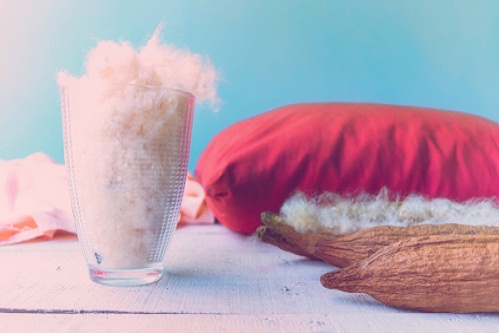
Kapok pillows are a good choice for anyone who values comfort and hygiene.
If you’re looking to buy a fluffy, cotton-like pillow without breaking your budget, Kapok is one of the only soft alternatives.
Kapok is a soft, fluffy, and lightweight fill material often used as an alternative to down or feathers
Kapok pillows are great for comfort but not so much for back pain.
They have a zipper on one side that allows you to adjust the fill amount, but they don’t mold as well to your shape as memory foam or latex do.
Pros
- Kapok is a natural fiber that is naturally odorless and the perfect pillow for anyone who sweats a lot.
- Eco-friendly option
Cons
- flammable
- doesn’t offer suitable support
Water Pillows
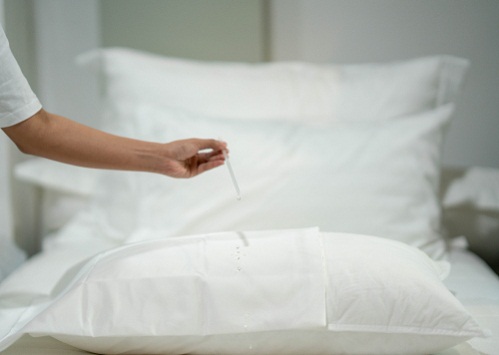
The last pillow type is the unconventional water pillow.
Contrary to belief, these aren’t filled with water – in fact, they typically only contain about three cups.
The top part of a water pillow typically includes polyester, while the bottom contains some water.
Pros
- An excellent option for hot sleepers
- Height and firmness level can be customized
Cons
- Expensive
Eco-Friendly Pillow Materials
Pillows are the most popular sleep product globally; however, they have become an environmental nightmare as more and more people replace their pillows more frequently.
Most pillows are made from polyester and foam fill, which are not biodegradable or renewable materials.
That said, there are many alternative pillow materials available today that are far better for you and the environment. The best options include the following:
- Buckwheat Hull Pillows
- Hemp Pillows
- Organic Cotton
- Recycled Cotton Pillows
- Recycled Polyester Pillows
- Recycled Wool Pillows
- Tencel Pillows
Frequently Asked Questions
1. Which pillow fill material is better: microfiber or polyester?
Microfiber pillows result from newer and more sophisticated manufacturing techniques, making them an overall better choice than polyester.
Microfiber pillows combine the breathability of cotton filling with softness and longevity from down to create efficient and more pliable pillow material.
2. What is the Best Pillow Fill Material?
People generally don’t overthink about what goes into their pillow. Still, since so many people are allergic to specific pillow types and have varying preferences regarding sleeping comfortably (think back pains), this oversight can cause real problems.
There isn’t one best-fill material that works for everyone.
Selecting the suitable pillow fill material boils down to match your budget, normal sleeping position, and any health issues you suffer from, such as neck pain or allergies.
3. How much stuffing goes into a pillow?
The type of pillow that you use will determine the amount of fill needed.
If you prefer a stiff feel, more fill will be necessary; conversely, less filling is used if your preference is for a softer pillow.
The weight required to stuff three 18 x 18-inch pillows also varies depending on the material used. One pound of fiberfill can make three average-sized pillows with ease. One pound of microbeads isn’t enough for one.
Affiliate Disclosure
Affiliate Disclosure: I may earn a small commission (at no cost to you) if you purchase a mattress after clicking a referral link or using a coupon code on this site. That said, all content and opinions on this site are my own and are NOT affected by these payments.
This site participates in the Amazon Services LLC Associates Program, an affiliate advertising program designed to provide a means for sites to earn advertising fees by advertising and linking to Amazon.com.
*Amazon and the Amazon logo are trademarks of Amazon.com, Inc, or its affiliates.

